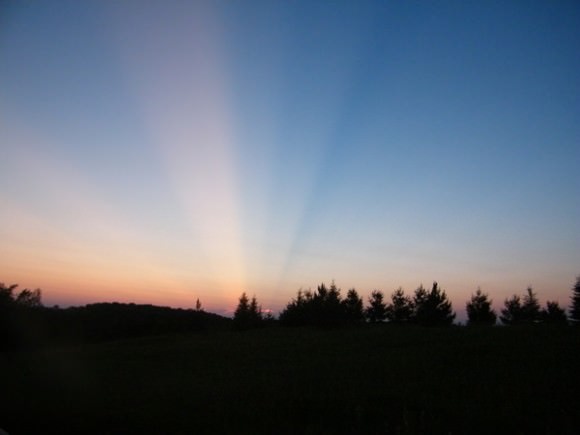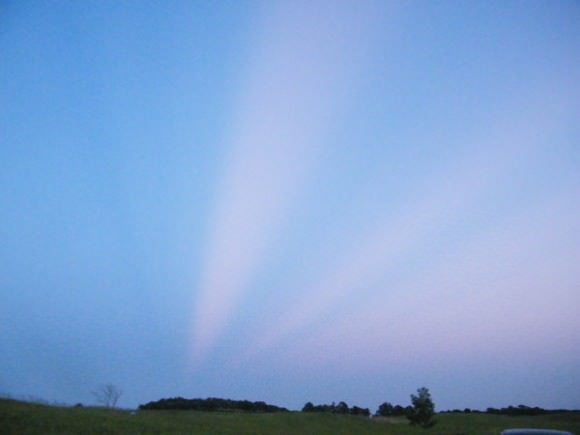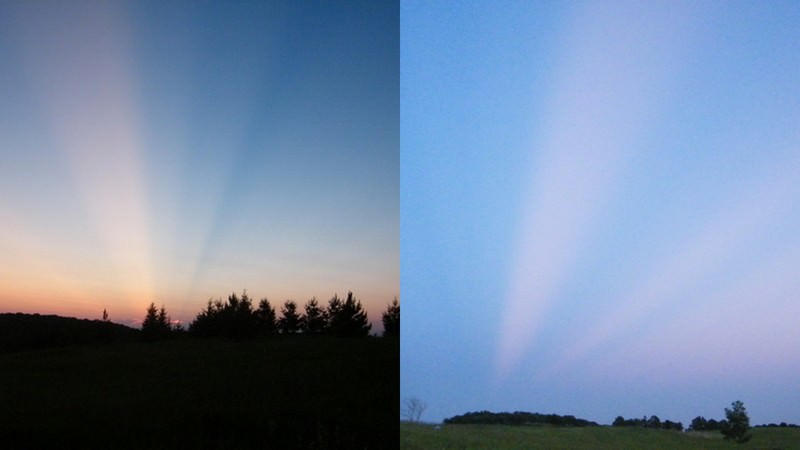[/caption]
I’m not sure how often this happens, but I’ve never seen it before: crepuscular rays on both the west and east horizon at the same time — or crepuscular and anti-crepuscular rays occurring simultaneously. I’m staying out in the wilds of Minnesota this summer, with great views of both horizons and captured these images last evening, June 9, 2012. The word crepuscular means “relating to twilight,” and these rays occur when objects such as mountain peaks or clouds partially shadow the Sun’s rays, usually when the Sun is low on the horizon. These rays are visible only when the atmosphere contains enough haze or dust particles so that sunlight in unshadowed areas can be scattered toward the observer.
Then occasionally, light rays scattered by dust and haze sometimes appear on “antisolar” point, (the horizon opposite to the setting sun). These rays, called anti-crepuscular rays, originate at the Sun, cross over the sky to the opposite horizon, and appear to converge toward the antisolar point.
Anyone else ever seen this before?
For both crepuscular and anti-crepsucular, the light rays are actually parallel, but appear to converge to the horizon due to “perspective,” the same visual effect that makes parallel railroad tracks appear to converge in the distance. One of the astronauts on the International Space Station actually captured crepuscular rays from orbit, showing how the rays are actually parallel. You can see that image and the description here.
Below are the two images separately. It was a beautiful evening and a thrilling sight.




I captured the same thing, 5-23-12 ,7pm,Orlando,FL, I posted photos an a video:
http://www.bautforum.com/showthread.php/133118-Sun-Beam-Arc-s-5-23-12-7-10pm-Universal-Orlando
Video link:
http://ulocal.wesh.com/_Hurricane-Sign-Sunset-5-23-12/video/1727967/63272.html
Enjoy!
We came down from Lappland and the Sun was not rising or setting, as we drove more south, the Sun rose up and at the opposite horizon was this rainbow of only red disfraction light, no other colors. as we stopped we saw it was a double rainbow. Could have the rainbow started as a crepiscule ray and then formed a rainbow? Here a link to the picture.
http://linksthroughspace.blogspot.fi/2012/06/transit-of-venus-2012-return-home.html
I could see two rainbows in that picture..